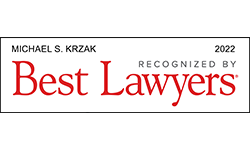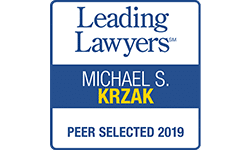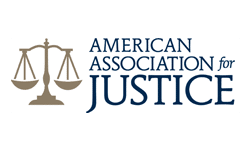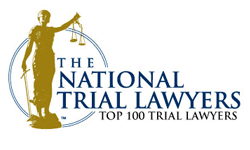How to Prove Fault After a Car Accident
In the immediate aftermath of an auto collision, one of the first questions asked is bound to be: who was at fault? The answer to this question is highly important to those involved. This information is necessary to determine which party’s insurance company should cover damages and losses, and which party may be entitled to compensation due to an at-fault party’s negligence. And in some cases, an at-fault driver may even be subject to criminal charges. All of these critical legal decisions depend on accurately determining fault after an accident.
But how is fault determined after a car accident? A car accident claim requires evidence to prove the at-fault party’s liability and the injured party’s right to compensation. Simply claiming that the other driver caused the wreck is not sufficient evidence. This is especially true when the other party denies fault in the accident. In a situation in which liability is disputed, it is particularly important to know how to prove fault after a car accident.
In the following article, we’ll discuss methods to prove fault after a car accident—including steps you can take at the scene of the crash and how your lawyer can gather evidence to support your claim. If you’ve been injured in a motor vehicle crash in the greater Chicago area, contact Krzak Rundio Gorman, Injury Attorneys to discuss what legal options may be available to you.
What to Do at the Scene of a Car Accident
Some of the most important evidence used to prove fault after a car accident is found at the scene of the collision. Here are some places you can look to gather proof of fault when you’ve been involved in a car crash.
Police Reports
A police officer will generally arrive at the scene of an accident and make a report detailing the incident. If an officer has not yet arrived, call your local police station to have an officer sent to your location. The police report made by an officer at the scene provides helpful information including:
- The names and contact information of parties involved
- The vehicles and property involved
- Insurance information of involved parties
- What property damage and physical injuries were sustained
- Location, date, time, and details of the collision
- Statements from all drivers and passengers involved
- Names and testimonies of any eyewitnesses
- A diagram of how the collision occurred
- Environmental conditions at the time of the crash
- Any broken traffic laws or tickets issued to either driver
- Possible conclusions about causes and fault, including factors like the speed of vehicles
Not all of the information included in a police report is necessarily fact. Some details, such as who may be at fault in the accident, are the opinions of the reporting officer. The police report is an important piece of evidence in determining liability after a car accident, and your lawyer will be able to assess which details constitute fact and which constitute an opinion.
Before leaving the scene, try to remember to obtain a copy of the police report, and make sure you have the contact information of the officer, the other parties involved in the crash, and any eyewitnesses.
Photographs
Taking pictures of the scene directly following a crash is an important step in documenting evidence that will soon be erased by time, weather, and road clean-up efforts. Even if you don’t see much in the photos to indicate fault, experts are often able to analyze details such as the position of the vehicles and the extent of the damage to determine the speed and angle of the vehicles immediately prior to the collision. This can be vital information when assessing fault in a motor vehicle crash.
To provide your case with the most support, try to document more than just your own vehicle’s damage. Many people’s first instinct is to photograph the broken windows and bent fenders on their own car or truck. This is important, but your photographs should be able to give a more comprehensive view of the accident and the circumstances leading to it. As much as possible, try to photograph:
- Damage done to your vehicle
- Damage to the other vehicle(s) involved
- The position of all involved vehicles before being moved after the collision
- Skid marks on the roadway
- Any damage to surrounding buildings, grass, trees, guardrails, or other property
- Traffic and road conditions
- Environmental factors like weather and lighting
- Any faulty object contributing to the crash, like a broken stoplight or fallen signpost
- Any other element relevant to the collision, such as a crosswalk or road debris
- Any other information you believe may be helpful
If you are not physically or emotionally able to take pictures at the scene of the crash, ask someone nearby for help. Don’t worry too much about the quality of your photographs—cell phone pictures taken clearly are perfectly adequate to provide the evidence you need to support your claim.
Admitting Fault
It’s never wise to admit fault after a car accident. Even if you think you may be responsible for the accident, any statement indicating your liability can be used to deny you compensation and give an insurance company reason to reject your claim. Even statements such as, “I’m sorry,” “I’m sorry I hit you,” “I didn’t see you,” or “I didn’t mean to” can be used to prove that you are at fault after an accident.
In many cases, it is actually impossible for you to know whether or not you were truly at fault, even if you feel you were responsible. The information that emerges through the investigation process is not something you will immediately know the moment after your car collides with another vehicle. If you admit fault but find out later that another driver or factor actually contributed to the crash, you will not be able to retract your earlier admission of liability.
Eyewitnesses
Eyewitness reports can be beneficial in providing an account of the accident through the eyes of a bystander uninvolved in the collision. When the word of one driver is weighed against another, the testimony of an eyewitness can be a more objective perspective giving context to the incident. But for a witness’s testimony to be credible, there are certain qualities that should be met by the individual serving as the eyewitness. These include:
- Honesty and credibility
- Impartiality
- Being present for the entirety of the incident, not just after the moment of collision
- Attention to detail
- Conveying facts only, not making speculations
- Relying only on personal observations, not what was overheard or assumed
If there were any witnesses present at the scene of the accident, it’s always a good idea to ask them if they are willing to provide a written description of the accident. If they are able, they should write down an account of what they saw, along with as many details as they can faithfully remember. Your lawyer may need to contact the eyewitness again later with questions, so be sure to record the witness’s name and contact information accurately.
How a Car Accident Lawyer Can Help Prove Fault
The job of a car accident lawyer is never simple. In addition to a thorough understanding of all federal, state, and local traffic laws, insurance policies, and other relevant information, your lawyer will need to possess a systematic and creative method for gathering evidence to prove fault after a car accident. As we have discussed, there are steps you can take after an accident to help preserve the evidence needed to support your case. In addition to these pieces of evidence, your car accident attorney will need to compile a great deal of proof to accurately tell the story of how the accident was caused, what damages were incurred, and how your life was affected.
Your lawyer will carefully examine elements including:
- Police reports
- Photographs taken at the scene
- Eyewitness reports
- Your testimony and the testimony of the other driver(s) or passenger(s)
- Testimonies from expert witnesses like traffic collision reconstructionists
- Video footage from traffic cameras, surveillance cameras, or dashboard cameras
- Physical damage done to vehicles and other property
- Reports from auto mechanics
- Medical reports for any injuries sustained in the crash
All of this information, and more, will be taken under consideration by a skilled attorney when working to determine fault and calculate compensation. There can be severe physical, emotional, and financial burdens placed on those injured in car accidents caused by negligent drivers. In cases of severe damage and injury, it is often best to retain the services of a car accident lawyer who can represent you throughout a complicated legal process.
If you are suffering the repercussions of a serious vehicle collision you did not cause, it may be in your best interest to speak with a legal expect. We invite you to reach out for a free case evaluation to have an experienced attorney from Krzak Rundio Gorman, Injury Attorneys review your case. We always provide an honest assessment of your case and legal options.











